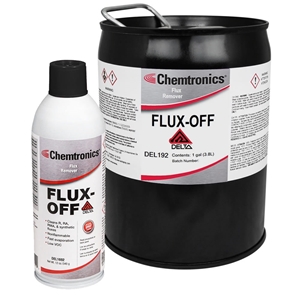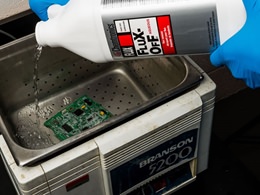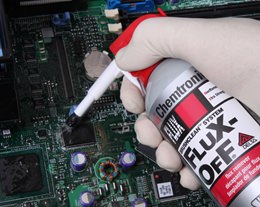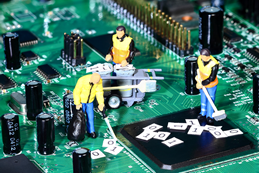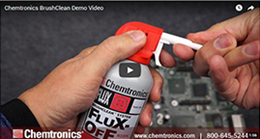Flux-Off Delta
Extra strength, nonflammable solvent that removes heavy and encrusted flux deposits
Flux-Off® Delta™ Flux Remover is an extra strength nonflammable solvent that removes heavy and encrusted flux deposits. Penetrates residues quickly to remove all types of flux, production contaminants, dust, and oil, then evaporates quickly leaving no residues.
Flux-Off® Delta Flux Remover has been engineered with Delta chemistry - new powerful precision cleaning solutions that are ideal replacements for AK225 and other chemicals. New environmental restrictions have forced facilities to search for and evaluate new cleaning products. With Chemtronics Delta Precision Solvent Cleaners, change is good… really good!
Available with The BrushClean™ System - Gentle scrubbing action of a brush combined with high performance flux remover. Click here for more information.
Features & Benefits
- Nonflammable and fast drying
- Powerful cleaner removes R, RA, RMA, and synthetic fluxes
- Removes white residues
- Non-corrosive, safe for metals
- No ozone depleting compounds, low VOC and GWP
- Available with BrushClean™ System
Applications
- Removes rosin-based and synthetic no-clean fluxes
- Removes white-residue formation
- Can be used in ultrasonic or immersion bath
| TDS | |
| REGS | |
| SDS | |
| Categories |
| Shelf Life | Aerosols & Liquids: 5 years, and 2 years after opening |
|---|---|
| Shipping Name | DOT: Consumer Commodity ORM-D |

